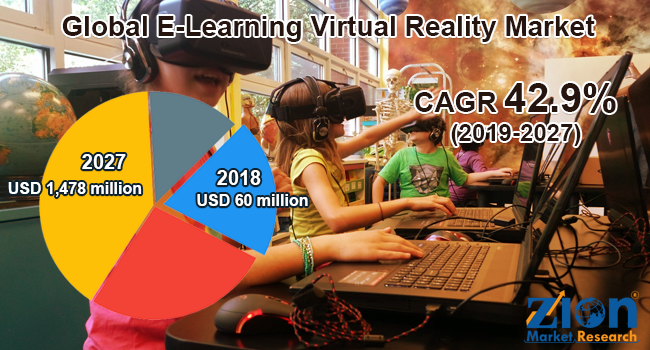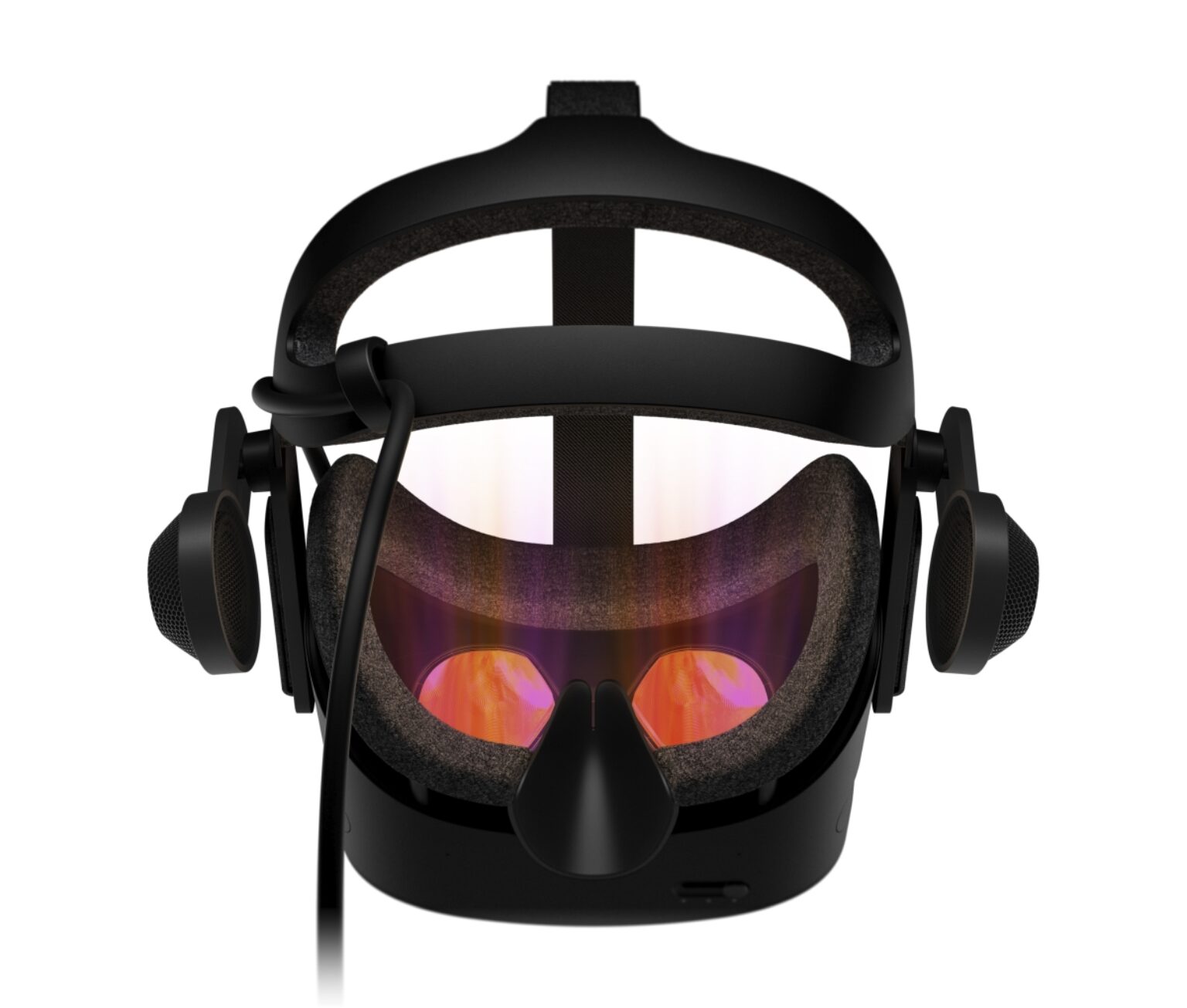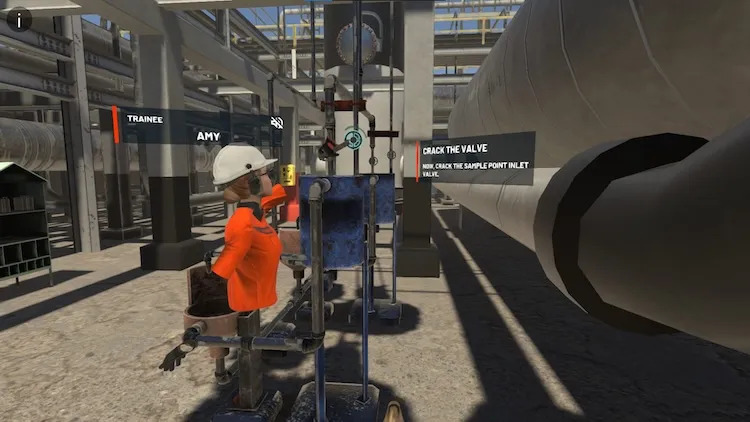Global Industry Perspective, Comprehensive Analysis, and Forecast, 2018–2027
Global e-learning virtual reality market expected to reach approximately USD 1,478 million by 2027, at a CAGR of around 42.9% between 2019 and 2027. Virtual reality is a realistic simulation in a three-dimensional environment, which is produced using interactive hardware and software. The e-learning virtual reality market is flourishing worldwide at a rapid pace.
E-learning is rapidly growing with its easy accessibility with virtual reality (VR) as a learning and development technology. E-learning studios are creating more effective and innovative VR training and simulations solutions/programs, which are used for both academic purposes and in various industries for conducting software and hardware programs.
Virtual reality in e-learning is beneficial in many ways. For instance, VR helps to block distractions, such as phones, TV ads, social networks, and other noises, enabling the learners to solely concentrate on their learning. This technique helps to submerge an interesting three-dimensional simulation consisting of various potent stimuli, which helps to naturally improve the brain’s ability to process and think new information leading to an unprecedented level of knowledge comprehension. Furthermore, the personalized learning environment is one of the most important factors demanded by learners and trainers. Designers of e-learning virtual reality programs can create an environment that is comfortable for learners, enabling them to enjoy the realistic simulation of the environment. However, hefty investments for hardware may limit the e-learning virtual reality market globally to some extent. Though the use of VR in e-learning is not a new concept, the growing e-learning virtual reality market is yet to find its foothold globally.
The global e-learning virtual reality market is fragmented based on component and application. On the basis of component, the global e-learning virtual reality market includes devices, software, and services. The devices segment is further classified into head mount and projector. Head-mounted devices are observed to hold the largest market share in the years ahead. Virtual reality implementations use high-quality and high-speed 3-D graphics and audio coupling hardware, such as head-mounted displays and wired clothing to achieve believability and realism. To immerse into an authentic virtual reality experience, a special head-mounted display or VR headset is essential. The application segment of this market includes academic and corporate training. The corporate training segment is expected to register the highest CAGR in the upcoming years. An increasing number of businesses are shifting toward e-learning virtual reality for training their employees. VR is implemented in places or situations where it can be hazardous or risky. Moreover, insurance companies can benefit from e-learning virtual reality by accurately assessing property damages caused by hailstorms, tornados, or floods.
The regional segment of the global e-learning virtual reality market includes North America, Europe, Latin America, Asia Pacific, and the Middle East and Africa. North America is projected to hold the largest share of the e-Learning virtual reality market globally in the years ahead, owing to the presence of leading market players across the region.
Some key participants operating in the global e-learning virtual reality market are Avantis Systems, eLearning Studios, Enlighten, Google, Immerse, LearnBrite, Lenovo, MOOC Solutions, Oculus VR, RapidValue Solutions, Sify Technologies, Skills2Learn, SQLearn, Tesseract Learning, ThingLink, VIVED, VR Education Holdings, and zSpace.
Quelle:
https://www.zionmarketresearch.com/market-analysis/e-learning-virtual-reality-market




